When it comes to rodents, most people think of tiny little creatures that can fit in the palm of their hand. But did you know that there are also giant rodents? These behemoth beasts can weigh up to two pounds and measure up to a foot long!
They are actually very intelligent creatures and make great pets. However, they are also very social animals, so getting them in pairs or groups is essential.
I have found that keeping rodents as pets can be an enriching experience. They are fun to watch and interact with and provide me with companionship. I highly recommend giving them a try!
If you’re looking for an exotic pet that is sure to turn heads, then a giant rodent is the perfect choice for you. In this article, we will look at the ten biggest pet rodents on the market today.
10 Biggest Pet Rodents List – Smallest To Biggest
Just like with any other animal, there are a variety of different pet rodents/rats that you can choose from. Depending on your personal preferences, you may want a big rat or a small rat.
There are even some people who prefer to have the biggest pet rat possible!
If you’re interested in finding out which pet rats are the biggest, you’ve come to the right place. Here is a list of the top ten biggest pet rodents, from smallest to largest:
10. Syrian Hamster
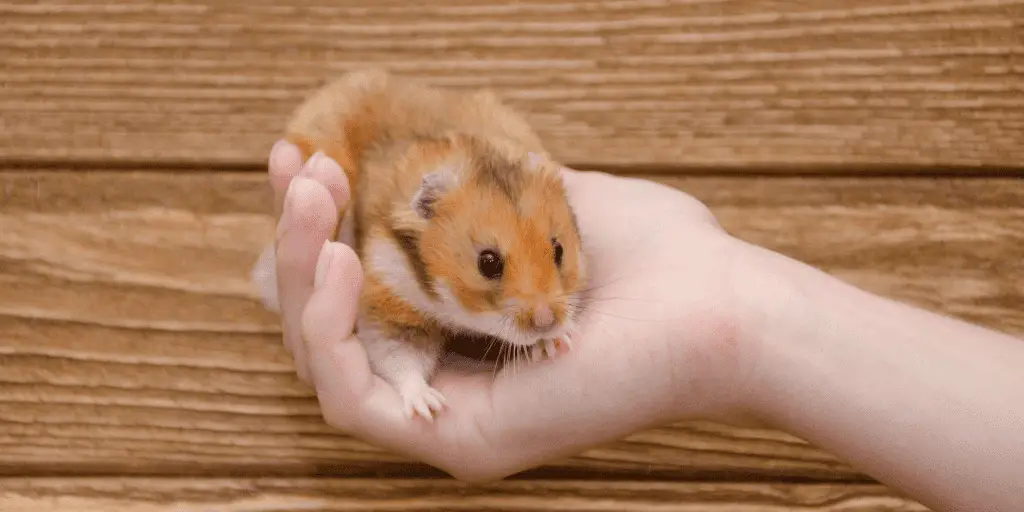
The Syrian hamster makes a great pet! They are very friendly and love to play. Syrian hamsters are the largest type of hamster and can grow up to 9 inches long! They are also very active and playful.
Weight
The average weight of a Syrian hamster is about 5 ounces.
Length
The average length of a Syrian hamster is about 9 inches.
Lifespan
The average lifespan of a Syrian hamster is about two to four years.
Diet
Syrian hamsters are omnivores, which means they eat both plants and animals. Therefore, they should have a diet that consists of fresh vegetables, fruits, meat, and grains.
Exercise
Syrian hamsters need to have a wheel in their cage to exercise. They also love to play with toys and explore their surroundings.
Common Health Problems
Syrian hamsters are prone to diabetes, obesity, and respiratory infections. They can also get hairballs from grooming themselves too much.
Coloration
Syrian hamsters come in various colors: white, black, brown, and red.
Temperament
Syrian hamsters are very friendly and love to play.
9. Mongolian Gerbil
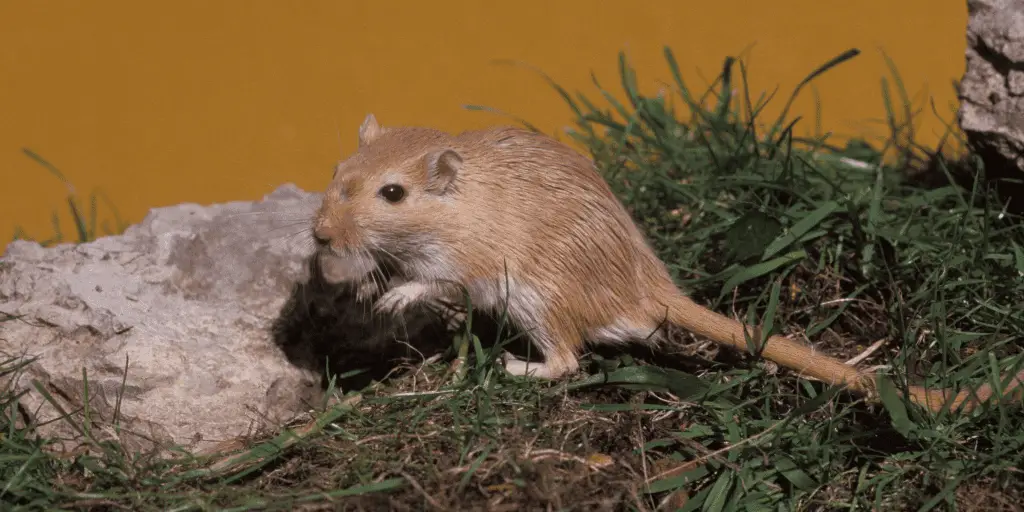
The Mongolian Gerbil is a pet that’s becoming increasingly popular. They’re intelligent, playful, and make great companions.
Weight
Mongolian Gerbils weigh 0.2 pounds.
Length
They can grow to be up to 10 inches long!
Lifespan
The average lifespan of a Mongolian Gerbil is between three and five years.
Diet
Mongolian Gerbils are omnivorous, meaning they can eat both plants and meat. However, their diet should be mostly plant-based. Some good options for Mongolian Gerbil food include hay, pellets, vegetables, and fruit.
Exercise
Mongolian Gerbils need to exercise daily to stay healthy. An excellent way to provide them with exercise is to put a wheel in their cage.
Common Health Problems
Some common health problems Mongolian Gerbils can experience include: obesity, dental problems, and heat stroke.
Coloration
Mongolian Gerbils come in various colors: brown, black, white, and gray.
Temperament
Mongolian Gerbils are generally gentle and playful. However, they can also be nippy if they’re not handled correctly.
8. Common Degu

The common Degu are one of the cutest, cuddliest, and most innovative pet rats you can get.
Weight
They can weigh between 0.4 to 0.66 pounds.
Length
Common degu rats can grow up to 12 to 16 inches long.
Lifespan
They can survive 6 to 8 years when taken good care of.
Diet
Degus are herbivores, and their diet should consist of hay, fresh vegetables, and a small amount of pellets.
Exercise
Degus are very active animals and need a lot of exercise. A degu wheel is a great way to give them the necessary exercise.
Common Health Problems
The common degu rat is prone to diabetes and obesity, so it is vital to keep an eye on their weight.
Coloration
Degu rats can be a variety of colors, but the most common are brown and gray.
Temperament
Degu rats are very active and playful. However, they are also very social animals and do best in pairs or groups.
7. Guinea Pig

Guinea pigs are some of the most popular pets in the world. These little rodents are known for their docile nature and cute appearance.
Weight
While there are many different guinea pig breeds, the average weight of a full-grown guinea pig is around two-three pounds in weight.
Length
The average length of a guinea pig is around eight to sixteen inches long.
Lifespan
The average lifespan of a guinea pig is around five to eight years, although some have been known to live up to ten years.
Diet
Guinea pigs are herbivores; their diet consists primarily of hay, fresh vegetables, and pellets.
Exercise
Guinea pigs need to exercise every day to stay healthy. This can be done by providing them with a large cage with plenty of space to run around. You can also provide them with toys and tunnels to play with.
Common Health Problems
The most common health problems for guinea pigs include respiratory, dental, and gastrointestinal issues.
Coloration
There are many different colorations of guinea pigs, including brown, black, white, and even red.
Temperament
Guinea pigs are social animals and love to be around people. They are active and playful and enjoy being petted and played with.
6. Street Rat

The standard or brown rat (Rattus norvegicus) is a member of the mouse family Muridae and a relative of the black rat, the house mouse, and the gerbil. The common rat is also known as the Norway rat or street rat. They make great pets.
Weight
They can weigh anywhere from 12 to 23 ounces (0.8 to 1.4 pounds).
Length
Their bodies can measure up to 18 inches long.
Lifespan
The lifespan of a pet rat is usually two to four years.
Diet
A typical pet rat’s diet consists of:
- Lab blocks
- Fruits and vegetables
- Timothy hay
- Water
Exercise
A pet rat needs plenty of exercise. Therefore, they should have a large cage with plenty of room to run, jump and play.
Common Health Problems
Some common health problems that affect pet rats are:
- Respiratory infections
- Ectoparasites
- Tumors
Coloration
The common rat can be brown, black, or gray in color. They may also have white markings on their belly and feet.
Temperament
Common pet rats are social animals and enjoy being around people. They are curious and active, and make great pets for children and adults alike.
5. Fancy Rat

The fancy rat is the most popular pet rat in the world, and for good reason! They are intelligent, friendly creatures that bond well with their owners. But, when it comes to the level of care they need, it’s a piece of cake, making them an excellent choice for first-time rodent owners.
One of the best things about fancy rats is that they come in such a wide variety of colors and markings. You can find everything from sleek black rats to fuzzy white ones. And if you’re looking for a really unique pet, there are even fancy rats with blue fur!
Weight
Fancy rats typically weigh between 450 and 650 grams.
Length
20 inches (including tail)
Lifespan
The average lifespan of a fancy rat is two to three years, but some have been known to live up to five years with proper care.
Diet
A diet for a fancy rat should consist of high-quality lab blocks, fresh vegetables, and occasional fruits as treats.
Exercise
Fancy rats are very active creatures and need plenty of space to explore and play. Therefore, a good rule of thumb is to provide at least two square feet of cage space per rat.
Common Health Problems
The most common health problems seen in fancy rats are respiratory infections, which can be prevented with regular cleaning of the cage and good ventilation.
Coloration
Self, bi-color, tri-color, agouti, marked (such as hooded or Berkshire), hairless, and dumbo are all colorations of the fancy rat.
Temperament
Fancy rats are intelligent, inquisitive, and social creatures that enjoy their owner’s and other rats’ company. They are not typically aggressive but may nip if scared or feeling threatened.
4. Chinchilla

The chinchilla rat is a rodent that is native to South America. They are also known as the “Colombian black and white rat.” They are one of the largest species of pet rats, and can grow up to 18 inches long.
Weight
A chinchilla rat usually weighs less than 2 pounds.
Length
They can grow up to 20 inches long, including the length of the tail.
Life span
The average lifespan of a chinchilla rat is more than ten years.
Diet
Chinchilla rats are omnivores, meaning they will eat both plants and animals. They love to eat fruits, vegetables, insects, and small mammals.
Exercise
Chinchilla rats need a lot of exercise. So they should have a large cage to run around in, and plenty of toys to play with.
Common Health Problems
Chinchilla rats are susceptible to several health problems, including respiratory infections, heart disease, and cancer.
Coloration
Chinchilla rats are black and white, with a black stripe running down their backs.
Temperament
Chinchilla rats make great pets because they are very social animals. They love to play and are very curious. They are also very affectionate and can be trained to do tricks.
3. Dumbo Rat
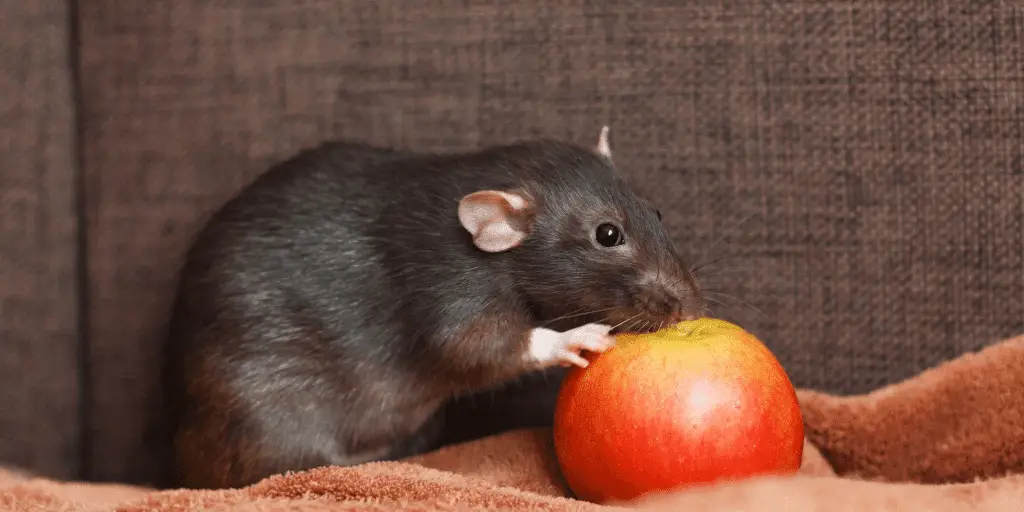
If you’re looking for a big pet rat, the Dumbo rat is a great option. These rats can grow up to 22 inches long, making them one of the biggest and friendliest pet rats you can get. Dumbo rats are also known for their unique ears, shaped like a flower.
Weight
Dumbo rats typically weigh between 1.3 to 1.5 pounds.
Lifespan
Dumbo rats have a life expectancy of two to three years.
Length.
Dumbo rats can grow up to 22 inches long.
Diet
Dumbo rats are omnivores, so their diet consists of both plant and animal matter. A typical diet for a Dumbo rat includes pellets, vegetables, fruits, meat, and bugs.
Exercise
Dumbo rats need plenty of exercise to stay healthy. An excellent way to provide exercise for your Dumbo rat is to set up a Rat Playground in their cage. This can include tunnels, ladders, and chew toys.
Common Health Problems
Dumbo rats are prone to a few health problems, such as respiratory infections and obesity. Therefore, taking your Dumbo rat to the vet for regular check-ups is vital to help prevent these health problems.
Coloration
Dumbo rats come in various colors, including black, blue, chocolate, and pink.
Temperament
Dumbo rats are usually gentle and docile, making them great pets for families with children..
2. Gambian Pouched Rat

As someone who loves rats, you might be wondering what the biggest pet rat you can get is. Well, wonder no more! Gambian pouched rats fit the bill.
Weight
Gambian pouched rats can weigh up to three pounds and be as big as a house cat.
Length
They can grow up to two-three feet long from nose to tail.
Lifespan
In captivity, these rats can live for up to eight years.
Diet
As with any pet, you’ll want to ensure your Gambian pouched rat has a balanced diet. A good quality rat food will have all the nutrients your pet needs. You can supplement their diet with fruits and vegetables. Water is also vital for these rats.
Exercise
Your Gambian pouched rat will need plenty of exercise. An excellent way to provide this is by giving them a large cage with lots of toys and plenty of space to run around. You can also take them out for supervised playtime.
Common Health Problems
Like any pet, Gambian pouched rats are susceptible to health problems. Some common ones include respiratory infections, obesity, and dental problems.
Coloration
Gambian pouched rats can be in various colors, including brown, black, and silver.
Temperament
Gambian pouched rats are friendly and can be easily trained. They love to play and be around people.
1. Capybaras

Capybaras are the world’s largest rodents and make surprisingly great pets. A capybara is worth considering if you’re looking for a giant pet rat.
Weight
Weighing around 170 pounds, capybaras are significantly larger than the average rat. But despite their size, they’re actually quite gentle and docile animals.
Length
They can grow up to four feet long, making them one of the longest rodents in the world.
Lifespan
Capybaras have a lifespan of around 12 years, which is relatively long for a rodent.
Diet
Capybaras are herbivores, and their diet consists mostly of grasses and other plants.
Exercise
They need plenty of exercise, and they love to swim. In fact, they’re often referred to as “water rats.”
Common Health Problems
Capybaras are generally healthy animals but are susceptible to scurvy.
Coloration
They have brown or reddish-brown fur, and their undersides are usually lighter in color.
Temperament
Quite social and enjoy spending time with their owners.
Comparison Chart
| Pet Rodent | Weight | Length |
| 10. Syrian hamster | 0.3 pounds | 0.75 feet |
| 9. Mongolian Gerbil | 0.2 pounds | 0.8 feet |
| 8. Common Degu | 0.66 pounds | 1.3 feet |
| 7. Guinea Pig | 2 – 3 pounds | 1.3 feet |
| 6. Standard Or Street Rat | 1.4 pounds | 1.5 feet |
| 5. Fancy Rat | 1.4 pounds | 1.6 feet |
| 4. Chinchilla | 1.8 pounds | 1.66 feet |
| 3. Dumbo Rat | 1.5 pounds | 1.8 feet |
| 2. Gambian Pouched Rat | 3 pounds | 3 feet |
| 1. Capybaras | 60 – 170 pounds | 4 feet |
These were the ten biggest pet rodents that you can own.
So, shuffle through the options and decide which is the best one for you! (we quite like Fancy Rats, so here are 17 Reasons you should get a pet rat today)
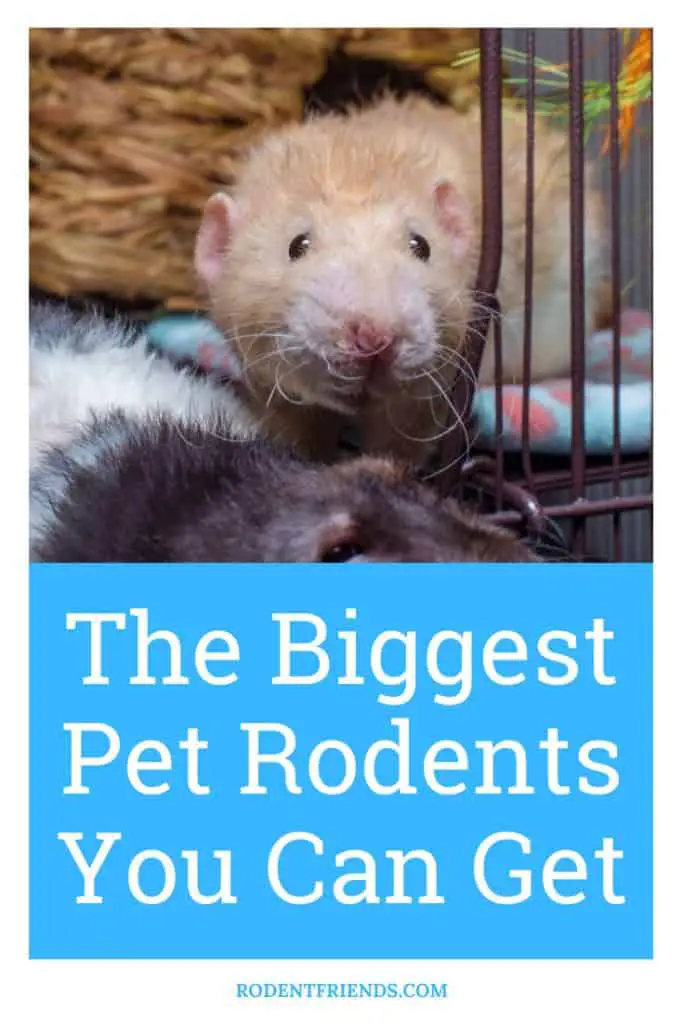




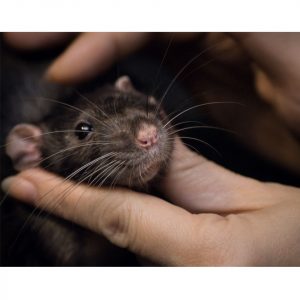
2 thoughts on “The Biggest Pet Rodents You Can Get (Ranked List With Images!)”
Comments are closed.